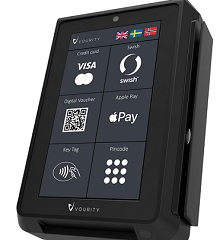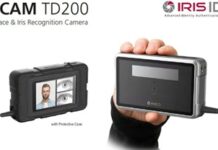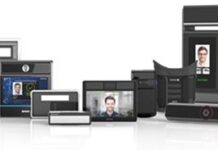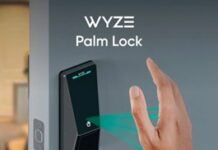
Innovative Swedish startup company, Vourity, is now launching a new access control system that is completely software-controlled and offers customers a way to activate and pay for only the functions they need, as and when they need them. New features can easily be added or removed via the cloud. This enables property owners to easily offer customers and visitors the opportunity to buy access, services and products around the clock.
The main element of the access control system is the “all-in-one” door terminal Vourity
POS 3. It handles both common access functions (tags and PIN codes) as well as various types of payment services. It is even certified for payment with regular credit cards and handles modern mobile payment methods such as Apple Pay, Google Pay and Swish.
“All functions in the terminal are dynamically controlled from the cloud, based on what needs you have and the access system becomes better and more secure over time through ongoing software updates that are made automatically from the cloud”, says Hans Nottehed, CTO at Vourity AB.
Core parts of the access control system are the functions for “paid access” where it is possible to charge for access to premises and resources. The idea is that, for example, property owners should be able to create additional revenue by selling new services and charging for them, for example, meeting rooms, event rooms, saunas, electrical vehicle charging, vending machines and renting out various resources, etc.
The payment is completely unattended (self-service) and is therefore well adapted for times of social distancing and where customers and visitors may need the ability to purchase access, services and products around the clock. “Paid access can thus create completely new sources of income for property owners and the access system can become a source of income instead of just being a cost”, says Hans Nottehed.
Door terminals are controlled via the cloud, where the user easily selects functions and which messages are to be displayed using a graphical flow diagram. The flow chart then controls how the door terminals work and what information is displayed to users and visitors. There are ready-made flow templates for the most common use cases, such as when staff have to pass with an RFID tag and / or PIN code, meeting rooms (booking and payment), electrical vehicle charging, public / customer restrooms, car wash, booking of laundry, entrance to amusement parks, camping and guest harbours and much more.
“The flow can control the opening of doors, turnstiles, speed gates, take in sensor signals, take in signals from fire alarms to show information about evacuation in the displays at all door terminals, play sound / speech, show advertising, integrate with alarm systems and much more”, says Hans Nottehed. All the information can also be presented in several languages. “This is a flexible access control system as a service where you only pay for the functions you use and where the system actually gets better with time”, Hans Nottehed concludes.











